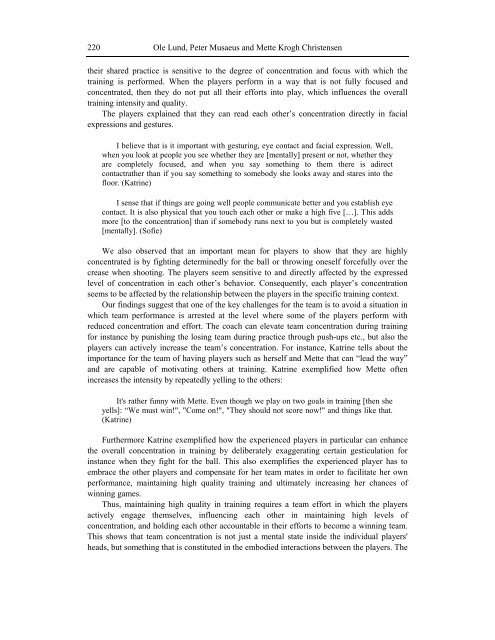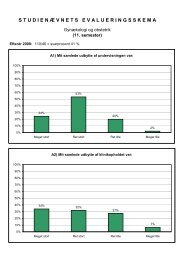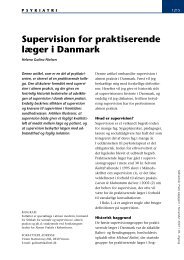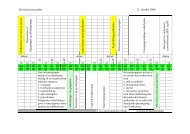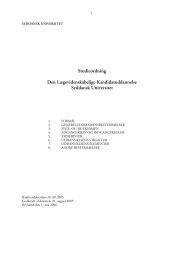shared deliberate practice
shared deliberate practice
shared deliberate practice
You also want an ePaper? Increase the reach of your titles
YUMPU automatically turns print PDFs into web optimized ePapers that Google loves.
220Ole Lund, Peter Musaeus and Mette Krogh Christensentheir <strong>shared</strong> <strong>practice</strong> is sensitive to the degree of concentration and focus with which thetraining is performed. When the players perform in a way that is not fully focused andconcentrated, then they do not put all their efforts into play, which influences the overalltraining intensity and quality.The players explained that they can read each other’s concentration directly in facialexpressions and gestures.I believe that is it important with gesturing, eye contact and facial expression. Well,when you look at people you see whether they are [mentally] present or not, whether theyare completely focused, and when you say something to them there is adirectcontactrather than if you say something to somebody she looks away and stares into thefloor. (Katrine)I sense that if things are going well people communicate better and you establish eyecontact. It is also physical that you touch each other or make a high five […]. This addsmore [to the concentration] than if somebody runs next to you but is completely wasted[mentally]. (Sofie)We also observed that an important mean for players to show that they are highlyconcentrated is by fighting determinedly for the ball or throwing oneself forcefully over thecrease when shooting. The players seem sensitive to and directly affected by the expressedlevel of concentration in each other’s behavior. Consequently, each player’s concentrationseems to be affected by the relationship between the players in the specific training context.Our findings suggest that one of the key challenges for the team is to avoid a situation inwhich team performance is arrested at the level where some of the players perform withreduced concentration and effort. The coach can elevate team concentration during trainingfor instance by punishing the losing team during <strong>practice</strong> through push-ups etc., but also theplayers can actively increase the team’s concentration. For instance, Katrine tells about theimportance for the team of having players such as herself and Mette that can “lead the way”and are capable of motivating others at training. Katrine exemplified how Mette oftenincreases the intensity by repeatedly yelling to the others:It's rather funny with Mette. Even though we play on two goals in training [then sheyells]: “We must win!", "Come on!", "They should not score now!" and things like that.(Katrine)Furthermore Katrine exemplified how the experienced players in particular can enhancethe overall concentration in training by <strong>deliberate</strong>ly exaggerating certain gesticulation forinstance when they fight for the ball. This also exemplifies the experienced player has toembrace the other players and compensate for her team mates in order to facilitate her ownperformance, maintaining high quality training and ultimately increasing her chances ofwinning games.Thus, maintaining high quality in training requires a team effort in which the playersactively engage themselves, influencing each other in maintaining high levels ofconcentration, and holding each other accountable in their efforts to become a winning team.This shows that team concentration is not just a mental state inside the individual players'heads, but something that is constituted in the embodied interactions between the players. The


